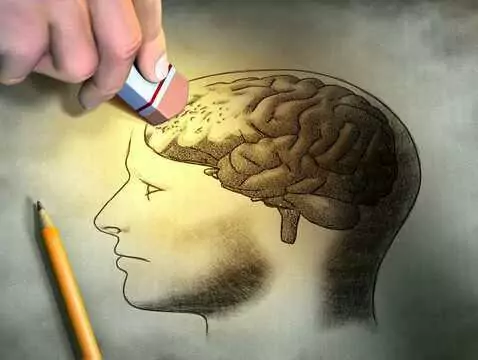Interview with Prof. JANUSZ RYBAKOWSKI, MD, Head of the Department of Adult Psychiatry, Poznań Medical University
Ad:
- World epidemiological studies indicate that approximately 17 per cent of the general population suffers from depression. Is that a lot or a little, Professor?
- First of all, inaccurate. The incidence at a given time, e.g. during the last year, oscillates around 6 per cent of the population. The figure of 17 per cent determines the lifetime risk of depression.
- This 6 per cent is globally - if I count correctly - ten times the total population of Poland!
- Depression is one of the most common pathological conditions in medicine. Among mental disorders, perhaps even the most common. If we were to add up the frequency of all anxiety disorders, formerly known as neurotic disorders, only this result would come close to the scale of the incidence of depression.
- In the literature on the subject, I have encountered the view that it is, and I quote, 'a disease of rich countries'. How should one understand such a statement?
- Perhaps the point is that in countries with a high level of development, there is the greatest awareness of the possibility of depression and many initiatives are being taken there to educate people about depression, as well as to recognise and treat the illness. Poland has also joined these countries in recent years.
- Surveys conducted in Poland show that among people reporting to their general practitioner, around 20 per cent suffer from depression, with some cases meeting the criteria for moderate or severe depression. However, in more than half the disease is never diagnosed. What do you make of this, Professor?
- A number of factors contribute to the under-diagnosis of depression in GPs. One is that depression can hide under symptoms of a somatic nature, engaging the GP's attention on cardiac, gastrointestinal or still other issues. In the case of such depression, also known as 'masked' depression, the patient usually reports to the psychiatrist at the end, when, after a number of tests, no organic cause for his or her malaise has been identified.
- And if depression hides behind an actual somatic illness - what then?
- The risk of depression in people burdened by somatic diseases, such as diabetes, coronary artery disease, etc., is undeniably higher....
- ...diagnosed?
- ...more difficult. It goes without saying that the process of psychiatric treatment cannot be carried out in isolation from the patient's general state of health, but also vice versa. These are bounded relationships.
- In Kopalinski the term 'soma' is defined as the opposite of 'psyche'. In your opinion: isn't there too much of an 'empty space' in medical knowledge between psychiatry and the other branches of medicine, to the detriment of the patient?
- Such a Cartesian dualism of soul and body does not exist in modern psychiatry. Drug treatment is effective in psychiatric disorders. We can also now image the structures of the brain in the course of performing mental activities.
- On the website www.psychiatria.pl, I found a transcript of a chat during which GPs, general practitioners could approach you with problems in the treatment of depression. At that time, you promised your more frequent presence in the virtual space. It has been four years, Professor!
- If there is such a wish, I am at your disposal. However, while this form of contact is educationally valuable, its value in deciding on the treatment of specific cases is limited.
- In the years 1981-1985, Prof. Jacek Bomba conducted research, which indicated that about 20 per cent of teenagers in Poland were suffering from depression. Five years later, a similar study was conducted by Prof. Hanna Jaklewicz, finding depressive disorders in this age group at 50 per cent. Isn't this upward trend and its dynamics frightening?
- I would not put it in terms of a trend. Adolescence is by its very nature a period with a higher risk of depressive symptoms. In contrast, the prevalence of mental disorders of a depressive nature requiring therapeutic intervention remains at a few per cent.
- Some sources estimate that several per cent of the population is affected by so-called borderline personality disorder.
- This is a major exaggeration. The aforementioned personality disorder is sometimes diagnosed in young people who experience periods of increased irritability, mood swings, greater impulsivity, etc. In many of them, it turns out years later that these may have been symptoms of so-called mixed states of bipolar affective disorder (manic-depressive disorder), i.e. with elements of both upper and lower poles. These individuals develop obvious bipolar affective disorder after a few years and are only then recognised.









